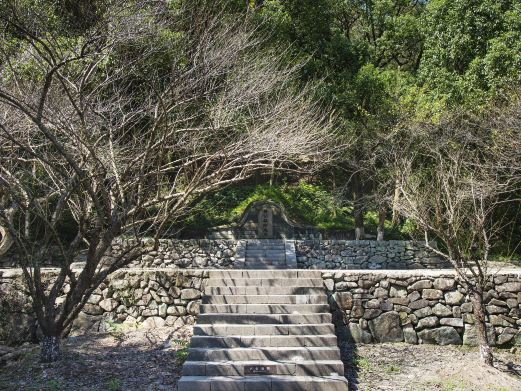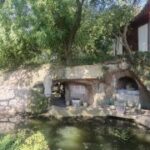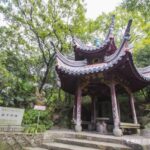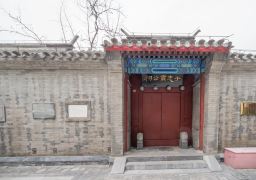In his later years, after the failure of the struggle against the Qing Dynasty, Mr. Lizhou built the Longhu Mountain Thatched Cottage on Huashan Mountain, where he engaged in reading and writing. In the winter of 1688, during the 27th year of Emperor Kangxi’s reign in the Qing Dynasty, Mr. Lizhou, at the age of 79, found his own cemetery site and constructed an extremely simple tomb. He also penned the articles “Lizhou’s Last Will” and “Funeral System or Question” as a warning to his descendants.

Following his death, Mr. Lizhou was buried in the clothes he typically wore, adhering to his explicit instructions: “One quilt and one mattress are placed on the stone bed. No coffin is used. No Buddhist services are performed. No seven-seven periods are observed. All music, witches, and inscribed streamers are not used.” His body was buried in the tomb without a coffin, and no tombstone was erected.
The stele inscription on the divine path was written by Quan Zuwang, a renowned historian from the early Qing Dynasty hailing from Yin County, while the epitaph was composed by Mao Qiling from Xiaoshan. Unfortunately, during the “Cultural Revolution,” Huang Zongxi’s tomb suffered destruction. However, in 1981, it was partially restored.
The tomb faces southeast with the west side, featuring a front shaped like a lotus leaf gable, constructed from stone slabs with staggered joints. In the middle, a stone tombstone stands upright, engraved with official script, bearing seven large characters: “Tomb of Mr. Huang Gonglizhou.” In front of the stele, there is a stone sacrificial table and a worship altar paved with pebbles.There is a stone bench on each side. Surrounded by lofty mountains and shaded by greenery all around, it gives people a sense of solemnity and tranquility.
Huang Zongxi (1610 – 1695), with the courtesy name Taichong and the art names Lizhou and also Nanlei, was from Yuyao, Zhejiang Province. His father, Huang Zunsu, was a successful candidate in the imperial examinations during the Wanli period. During the Tianqi period, he was a censor and a member of the Donglin Party. He was removed from office and returned to his hometown due to impeaching Wei Zhongxian. Soon he was imprisoned again and died from torture. Nineteen-year-old Huang Zongxi went to the capital to appeal for justice. He wounded the mastermind with an awl in public and chased after the murderer. Emperor Sizong of the Ming Dynasty praised him as a “loyal minister and orphan”. After returning to his hometown, Huang Zongxi studied even harder. He also studied under the famous philosopher Liu Zongzhou and obtained the learning of Jishan. After the Qing army entered the pass, Huang Zongxi summoned hundreds of local youths to form the “Shizhong Battalion” to participate in the anti-Qing battle for several years. After failure, he returned home and closed the door to write. The Qing court repeatedly summoned him, but he declined all invitations.
The opening hours are from 8:00 to 17:00 all year round. Specific opening hours are subject to the actual situation on the day.









